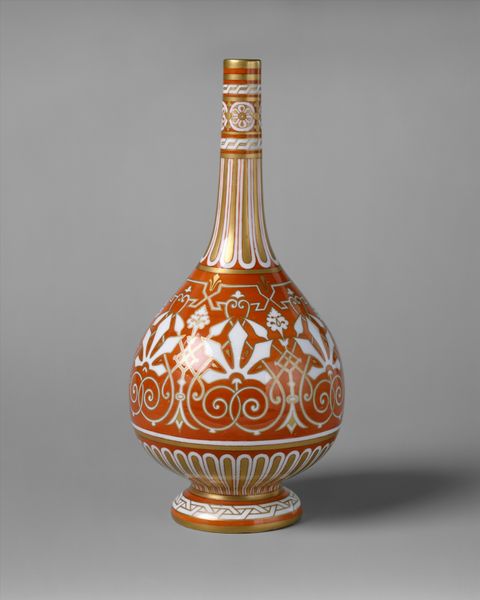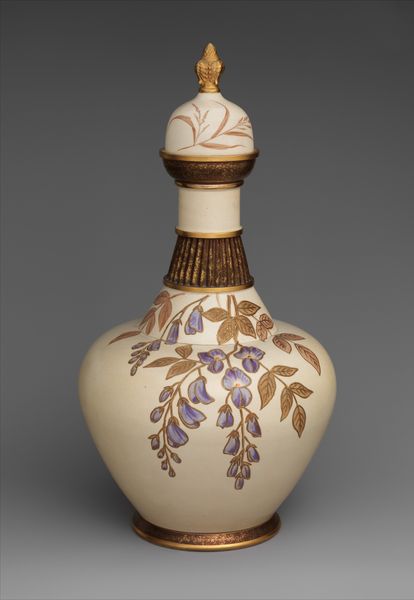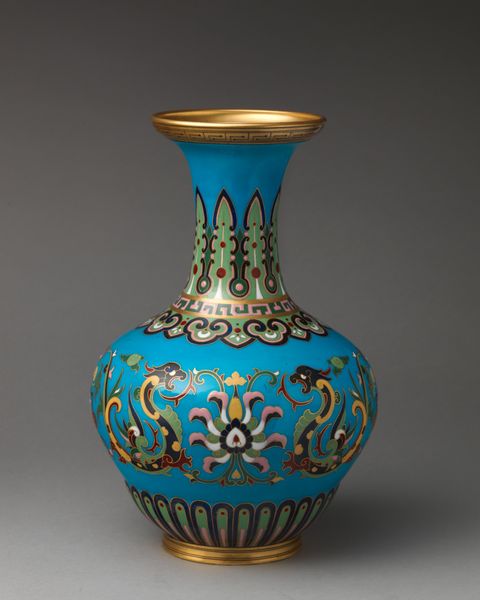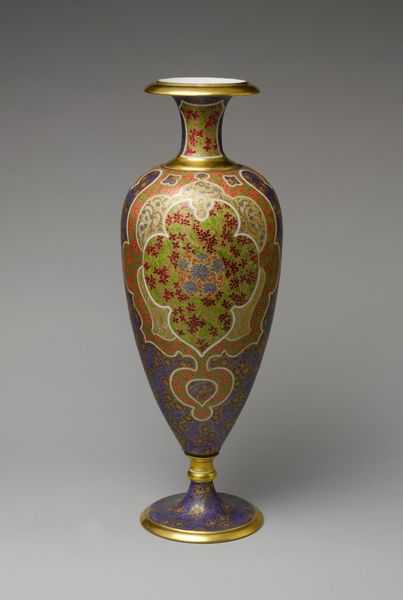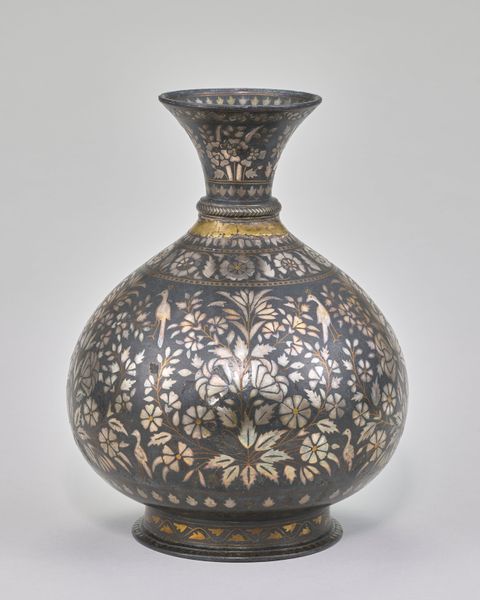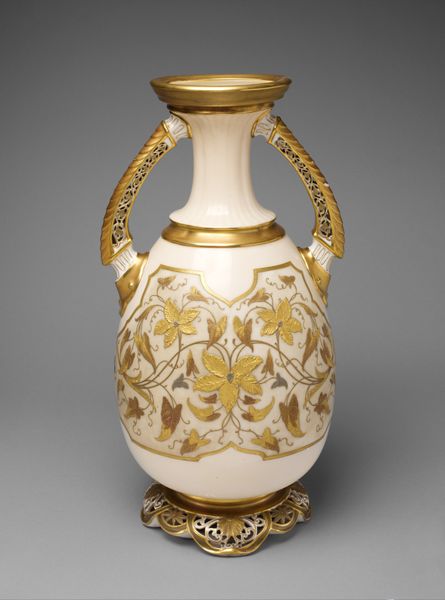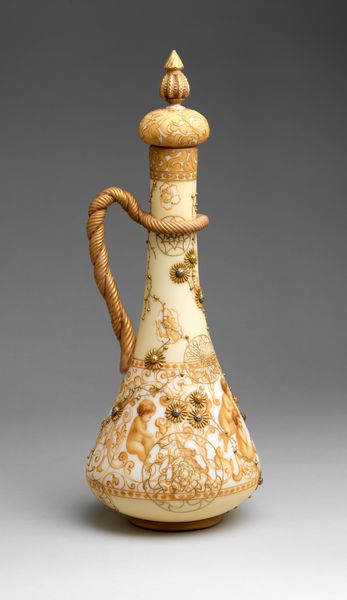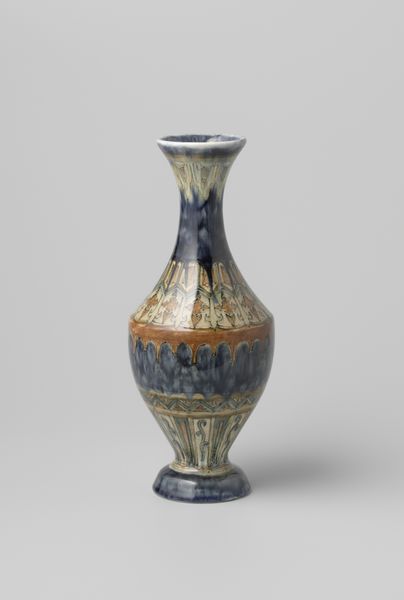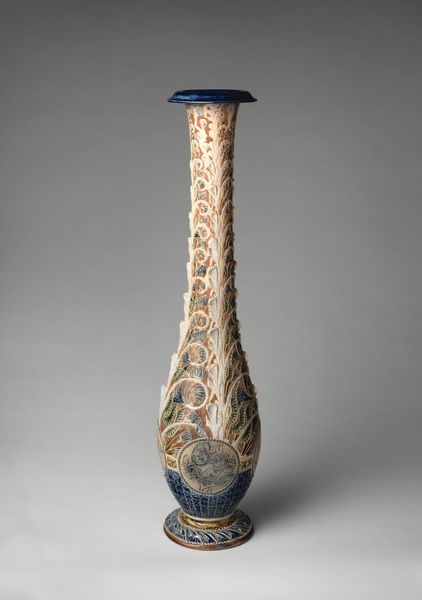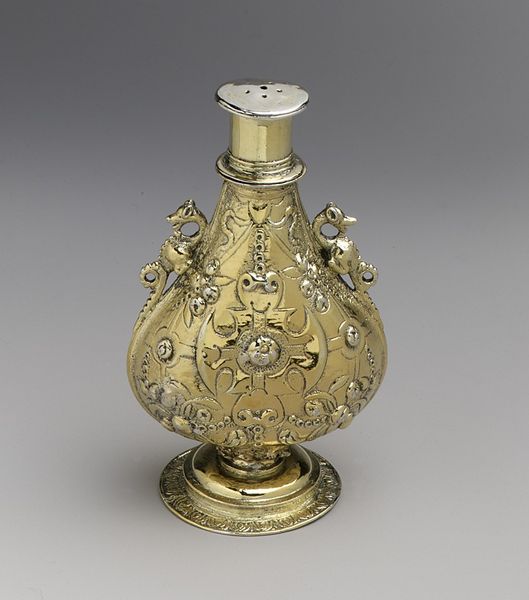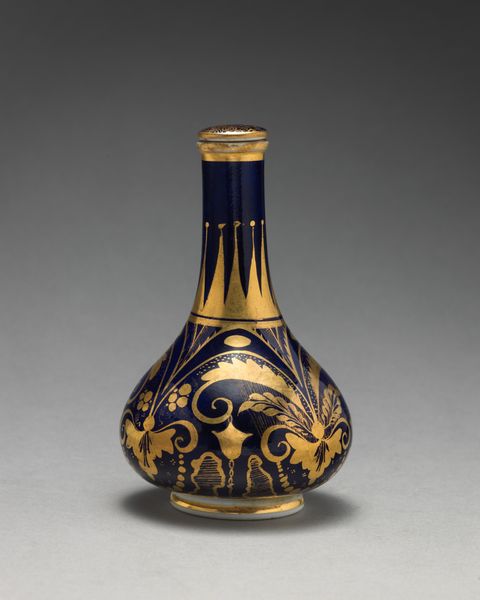
ceramic
#
art-nouveau
#
ceramic
#
decorative-art
Dimensions: H. 27 in. (68.6 cm); Diam. 14 1/2 in. (36.8 cm)
Copyright: Public Domain
Curator: I’m immediately drawn to its slender elegance. It has such an assured verticality. Editor: And the symmetry. It is very visually arresting, certainly an intriguing piece that combines form and function. What can you tell us about it? Curator: This is a “Covered Vase,” crafted between 1886 and 1890. The artist was Edward Lycett. You’ll find it residing here in the Metropolitan Museum of Art. Editor: That intricate floral motif climbing up the ceramic is quite striking. Curator: Art Nouveau often looked to the natural world, as if decoration might fuse with organic growth, but that doesn't make it an innocent form. Consider the social status of those who commissioned such luxurious decorative items. Their wealth was made off the backs of an impoverished laboring class. Isn't it telling how removed this vase is from depicting actual labor? Editor: While your contextual interpretation is well noted, one could also simply appreciate the highly accomplished combination of colour, texture and balance here. Notice how the earthy browns and golds contrast with the white background and the dark band around the base? Curator: These contrasts certainly evoke something beyond mere decoration; they tell stories of historical moments and social values reflected in aesthetic forms. But do we ever wonder whose stories these "decorative" objects erase in the process of elevating bourgeois taste? Editor: Perhaps, but by looking so intently at the cultural circumstances around a work, aren’t we risking losing the potential richness of looking itself, of letting the careful composition affect us? The eye climbs effortlessly along the body of the vase, and lingers a little on the metallic lace cap. It is harmonious. Curator: Indeed. Still, acknowledging the social context doesn’t diminish appreciation; it deepens it. Understanding its origins empowers us to question the values it represents. I appreciate how its inherent biases can be revealed through critical dialogue. Editor: And I shall reflect further upon the effect that a deeper understanding of structure and texture has on the narrative of art. Curator: A good dialogue can itself act as a mirror reflecting aspects beyond mere art, as well as revealing who we are as viewers.
Comments
No comments
Be the first to comment and join the conversation on the ultimate creative platform.
